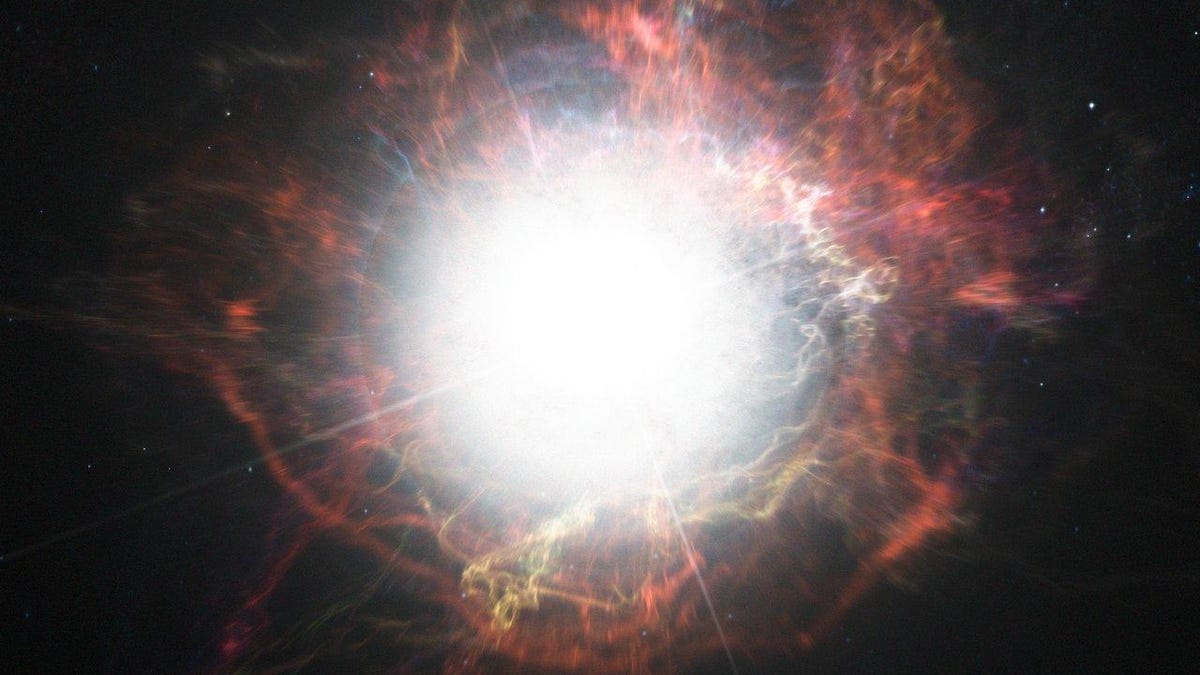Mysterious explosive zombie star refuses to stay dead
Stars usually go out in a bright flash that fades fast, but astronomers have spotted a massive star that just keeps exploding after more than 50 years.

Stars usually die in a flash (literally), but astronomers have found a mysterious specimen that keeps exploding and exploding.
"This supernova breaks everything we thought we knew about how they work," Iair Arcavi said in a statement. Arcavi is a NASA Einstein postdoctoral fellow at California's Las Cumbres Observatory. "It's the biggest puzzle I've encountered in almost a decade of studying stellar explosions."
An Arcavi-led study on the zombie supernova appeared Wednesday in the journal Nature.
At the end of their lives, most large stars collapse into black holes or go out with a big bang in a supernova explosion that burns bright but then fades quickly, usually after just a few months. So it's very weird that a supernova named iPTF14hls appears to have exploded 50 years ago only to survive and start exploding again in 2014. In fact the ongoing explosion, or the remnants of it, can still be seen today.
The supernova was spotted in 1954 only to reappear 50 years later.
When astronomers first spotted the supernova, in September 2014, it seemed pretty ordinary. But several months later astronomers at Las Cumbres Observatory saw something unprecedented: iPTF14hls was getting brighter again after fading. As scientists continued to watch, the turbulent but resilient star faded and brightened again at least five times over two years, like a cat with nine lives or a zombie with an iron helmet protecting its brain.
The story of this seemingly invincible star became even more remarkable when astronomers checked archival data and found evidence the same star had also exploded in 1954, only to survive and go supernova again half a century later.
This graph shows the supernova fading and brightening repeatedly over more than a year.
According to the study, the exploding star is probably more than 50 times bigger than the sun, making iPTF14hls perhaps the most massive stellar explosion ever seen. The researchers had to come up with a new model to explain a supernova that seems to take place or recur over a decades-long time scale. The theory is basically that very massive stars may become so hot in their cores that a series of explosions blow off outer layers of the star over a long period before a final explosion collapses the star into a black hole.
"These explosions were only expected to be seen in the early universe and should be extinct today," said Andy Howell, leader of the LCO supernova group and a co-author of the study. "This is like finding a dinosaur still alive today. If you found one, you would question whether it truly was a dinosaur."
The new model for a massive supernova explosion doesn't quite solve the entire mystery, though. The numbers don't fully explain where the amount of energy needed for all the observed explosions comes from.
"Another mechanism for the violent ejection of mass in massive stars may be required," the study reads.
A companion column in Nature by UC Santa Cruz physicist Stan Woosley, who wasn't part of the research team, points out that solving the remaining mysteries behind this unusual supernova could also lead to a better understanding of the black holes that produced the first directly detected gravitational waves.
"For now, the supernova offers astronomers their greatest thrill: something they do not understand," Woosley writes.
Crowd Control: A crowdsourced science fiction novel written by CNET readers.
Solving for XX: The tech industry seeks to overcome outdated ideas about "women in tech."

